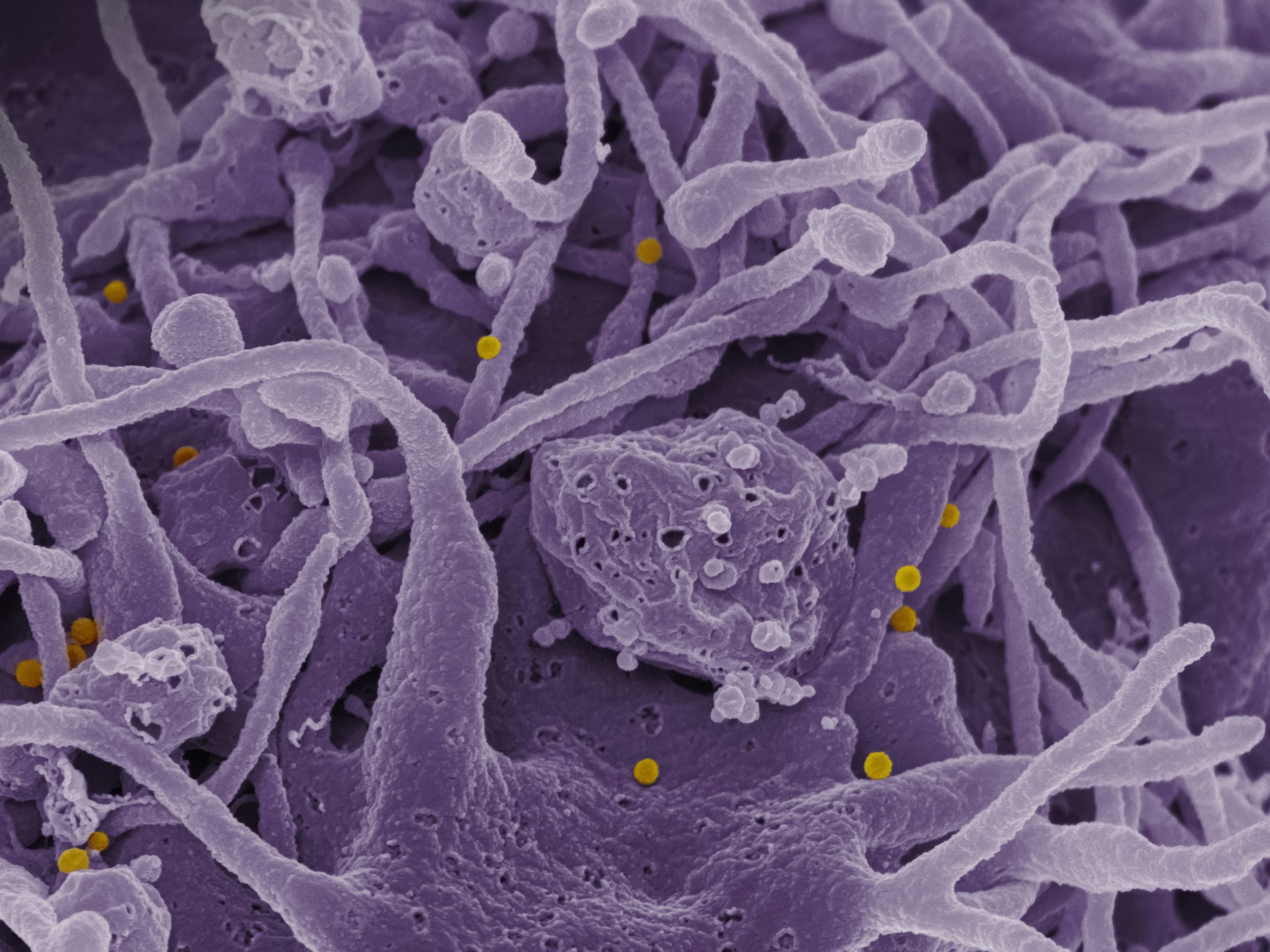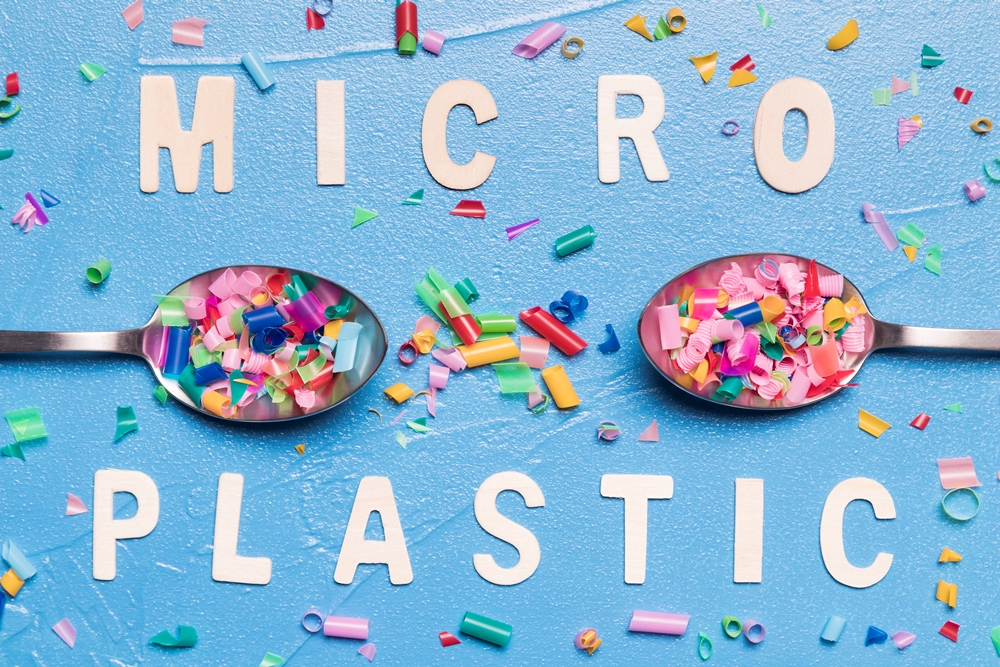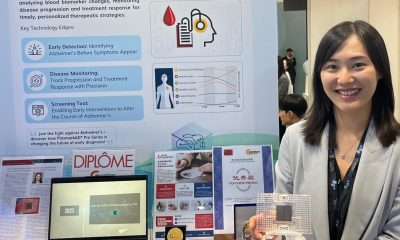Wellness
Gut microbiome of world’s oldest woman may reveal secrets to longevity

The world’s oldest person Maria Branyas Morera died at 117 years old – and researchers believe that her gut microbiome may hold the secrets to longevity.
To uncover the key to a long life, researchers analysed different aspects of Morera’s health including her genes, transcriptome, metabolism, proteins, microbiome and epigenetics.
The team, based at the Josep Carreras Leukemia Research Institute in Spain, also conducted extensive interviews addressing her clinical history and lifestyle habits such as sleep, diet, exercise and social interactions.
They found that Morera had a number of healthy lifestyle habits that are known to contribute to longer lifespans such as physical exercise, a healthy diet and maintaining social ineractions throughout her life.
The researchers write: “In spite of several emotionally painful events during her last years of life, like her son’s death, she kept a strong physical and mental health throughout life with good sleep habits, balanced Mediterranean diet, and active social life.
“She largely enjoyed from quality time with family and friends, playing with dogs, reading books, growing a garden, walking, and playing the piano.
“She suffered from Covid-19 and chronic age-related diseases like bronchiectasis, oesophagus diverticulum, and osteoarthritis, with limited movement and high dependency during her last months of life.
“She never suffered from other prevalent age-related diseases like cancer or neurodegenerative diseases, unlike siblings.”
However, despite these healthy practices, the researchers believe the secret to Morera’s long life may lie in her gut.
The team used rDNA analysis to examine Morera’s microbiota, comparing the results with 445 samples from control individuals including 250 women and 195 men aged 61 to 91 years.
The team found that Morera had a higher microbiome diversity than the control female population, with higher levels of actinobacteriota – one of the four major gut microbiota which contribute to gut health and immunity – in comparison with the control populations from both genders.
According to the team, this increase in actinobacteriota was due to the elevated amount of bifidobacteriaceae, particularly bifidobacterium – a finding they say contrasts sharply with the typical decline of this bacterial genus in older individuals.
“Bifidobacterium is thought to be a beneficial bacterium contributing, among other processes, to anti-inflammatory responses, an observation that links with the low levels of inflammation markers in the metabolomics study,” the researchers wrote.
“High content of Bifidobacterium has also been associated with the production of short-chain fatty acids and conjugated linoleic acid, observations that relate to the “healthy” lipid-related biomarker profile detected by 1H-NMR.
“Importantly, the use of Bifidobacterium as a probiotic that could slow down the progression of many ageing-associated disorders is gaining momentum.”
The team highlight that 117-year-old Morera ate around three yogurts every day containing the bacterium streptococcus thermophilus and Lactobacillus delbrueckii subsp. bulgaricus.
These bacterium are known to favour the growth of the the healthy bacteria in the gut, and the researchers say this could be an example of a dietary intervention that is associated with healthy ageing and long lifespan.
The researchers wrote: “Overall, these results suggest that the studied extreme supercentenarian possesses a microbiome that confers an increased likelihood for a healthy extended lifespan. This is also consistent with her adherence to a Mediterranean diet, which might have contributed to the described unique microbiome composition.”
The paper is yet to be peer reviewed.
Research
Scientists discover new anti-ageing drug class that could extend lifespan

Scientists have identified a new anti-ageing drug class that acts on gut bacteria processes, offering potential new ways to extend human lifespan.
The drugs target the Target of Rapamycin (TOR) pathway — a system in humans and other species that regulates growth and ageing and plays a central role in age-related diseases such as cancer and dementia.
The discovery helps explain how drugs can influence longevity through this pathway, which is already a major focus in ageing and cancer research.
Existing drugs such as rapamycin have shown promise in extending healthy lifespan in animals.
Researchers from Queen Mary University of London tested a next-generation drug called Rapalink-1, which inhibits TOR and is being investigated for its anti-cancer properties.
They found that Rapalink-1 not only slowed yeast cell growth but also extended lifespan, acting through the TORC1 cluster of proteins — part of the growth-promoting arm of the TOR pathway.
The study also identified a key role for gut bacteria enzymes known as agmatinases, which break down agmatine — a compound produced from the amino acid arginine — and help keep TOR activity in check.
Previous research has shown that when these enzymes lose function, cells grow faster and age prematurely.
Studies have also indicated that compounds linked to this pathway can promote longevity and benefit cells.
“By showing that agmatinases are essential for healthy ageing, we’ve uncovered a new layer of metabolic control over TOR – one that may be conserved in humans,” said Charalampos Rallis, an author of the study.
“Because agmatine is produced by diet and gut microbes, this work may help explain how nutrition and the microbiome influence ageing.”
Although agmatine supplements are already available commercially, scientists caution against taking them for growth or longevity without medical supervision.
The research suggests agmatine may be beneficial only when certain metabolic pathways related to arginine breakdown are functioning properly.
“In addition, agmatine does not always promote beneficial effects as it can contribute to certain pathologies,” Dr Rallis said.
News
Half of Brits fear dementia more than any other condition, research finds

Half of UK adults fear dementia more than any other health condition, with women and over-65s the most likely to share this concern, new research shows.
The figures come from the latest Dementia Attitudes Monitor, a biennial survey of more than 2,000 people that tracks how the public thinks and feels about dementia.
It explores what people believe raises their risk, how likely they are to seek a diagnosis, and their views on how effective treatments are.
Now in its fourth wave since launching in 2018, the survey was commissioned by Alzheimer’s Research UK and shows that fear remains high as dementia continues to be the UK’s leading cause of death.
Hilary Evans-Newton is chief executive of Alzheimer’s Research UK.
She said: “People fear dementia because there is still no cure. Dementia continues to rob people of their independence and place an immense strain on families and society.
“By 2040, 1.4 million people in the UK are expected to be living with dementia, making progress more urgent than ever.”
While 59 per cent of UK adults say they would feel comfortable discussing a diagnosis, stigma remains a major barrier, particularly among minority ethnic communities.
Among Black African, Black Caribbean and Black British adults, this drops to 46 per cent, with more than a third (35 per cent) saying they would not feel comfortable — compared with 23 per cent of white respondents.
Views also vary by age.
Nine in ten people aged 35–64 said they would likely seek a diagnosis if they were worried about early-stage Alzheimer’s or another form of dementia.
Among adults aged 65 and over, this falls slightly to eight in ten.
Older adults are twice as likely to say they wouldn’t seek a diagnosis: seven per cent of those aged 35–64 said they probably wouldn’t speak to a doctor, compared with 14 per cent of people aged 65 and over.
Alzheimer’s Research UK is tackling stigma through its Dementia Community Champions programme, which supports volunteers to start conversations about dementia, stigma and research within their own communities.
Emily Allen, a supporter of the charity whose mother was diagnosed with young-onset Alzheimer’s in 2010, shared her experience.
She said: “When mum was first diagnosed, I didn’t know much about dementia.
“I remember searching the internet for any information I could find about Alzheimer’s.
“I couldn’t comprehend the thought of mum not knowing my name, not knowing who I am. It was terrifying.
“When I discussed it with my sisters, we would call it the ‘Big A’ as we couldn’t bring ourselves to say the word.
“I think there is more understanding among the public about dementia now.
“But there is still so much fear because of how it affects people and their families, and because there are so few effective treatments available.”
When asked to choose the top priorities for dementia research from a list of eight, 43 per cent of respondents selected finding a cure as the most or second-most important goal, followed closely by prevention.
Since the previous wave of the monitor in 2023, two new treatments — lecanemab and donanemab — have been licensed in the UK (2024).
Although not yet available on the NHS, they mark a significant milestone in research and may explain why the public continues to prioritise a cure.
News
Microplastics could increase bowel cancer and depression risk

Microplastics from food packaging may damage the gut and raise the risk of bowel cancer and depression, new research suggests.
Austrian researchers made the discovery after examining stool tissue from healthy volunteers and found that the tiny particles could alter microbial activity in the gut, with some of the changes reflecting patterns previously linked with depression and bowel cancer.
Experts described the findings as “significant” and said it was the first human study to show that these plastic fragments could alter the human gut microbiome – the community of microorganisms that live in the digestive system.
Researchers from the University of Graz used stool samples from five healthy volunteers to grow gut microbiome cultures, which were then exposed to five common microplastic types – polystyrene, polypropylene, low-density polyethylene, poly(methyl methacrylate) and polyethylene terephthalate.
All samples were tested at concentrations reflecting estimated human exposure, as well as higher doses to explore possible dose-dependent effects.
Microplastics are plastic fragments as small as two micrometres – around two-thousandths of a millimetre – which enter food, water supplies and even the air as plastics degrade naturally.
Recent studies have identified microplastics in human lung tissue, maternal and foetal placental tissue, human breast milk and human blood. A growing body of research has also linked them to cancer, heart disease, dementia and lower-quality sperm.
“These findings are significant given how pervasive microplastic exposure is in everyday life,” said Christian Pacher-Deutsch, a microplastics researcher at the University of Graz and lead author of the study.
“Microplastics have been found in fish, salt, bottled water, and even tap water, meaning that most people are exposed daily through ingestion, inhalation and skin contact.
“The key takeaway is that microplastics do have an impact on our microbiome.
While it’s too early to make definitive health claims, the microbiome plays a central role in many aspects of well-being, from digestion to mental health.
“Reducing microplastic exposure where possible is therefore a wise and important precaution.”
Although total bacterial cell counts remained largely unchanged, microplastic-treated samples showed a consistent and significant increase in acidity compared with untreated ones, indicating altered microbial activity.
Further analysis showed that certain bacterial groups changed in composition depending on the microplastic type, with most changes occurring within the phylum Bacillota – a key group of gut bacteria important for digestion and overall gut health.
The researchers also discovered that some of these microplastic-related changes mirrored microbial patterns previously linked to diseases such as depression and bowel cancer.
Scientists said they were not yet certain why this occurred but suggested several possible explanations.
“For instance, biofilms can form on microplastic surfaces, providing new niches that some microbes colonise more rapidly,” said Mr Pacher-Deutsch.
“Microplastics may also carry chemical substances that directly influence bacterial metabolism.
“This can lead to changes in acid production, which may serve as a bacterial stress response, unintentionally altering the gut’s pH.”
The research will be presented in full at the United European Gastroenterology annual congress in Berlin on 7 October.
There are around 44,000 cases of bowel cancer every year in the UK and 142,000 in the US, making it the fourth most common cancer in both countries.
Symptoms often include changes in bowel movements such as persistent diarrhoea or constipation, feeling the need to poo more or less frequently and blood in the stool. Stomach pain, bloating, a lump in the abdomen, fatigue and unexplained weight loss are among other signs.
Although the vast majority of bowel cancer diagnoses affect those aged over 50, rates in younger adults have risen by about 50 per cent over the past 30 years, while figures in older age groups have remained stable or declined.
Cancer Research UK estimates that over half (54 per cent) of bowel cancer cases in the UK are preventable.

 News2 months ago
News2 months agoResearch roundup: AI tool developed to predict markers of Alzheimer’s disease, and more

 News1 month ago
News1 month agoAlmost half of adults with diabetes are undiagnosed, study finds

 News4 days ago
News4 days agoNew technique can track Alzheimer’s in real time

 Wellness2 months ago
Wellness2 months agoOmega-3 may protect women from Alzheimer’s disease

 News3 weeks ago
News3 weeks agoChronic insomnia doubles dementia risk, study finds

 News1 month ago
News1 month agoHep B vaccine may lower diabetes risk, study suggests

 Technology2 weeks ago
Technology2 weeks agoSimple test can predict risk of severe liver disease

 News2 months ago
News2 months agoInterview: How AI-driven blood test could speed Alzheimer’s diagnosis





































